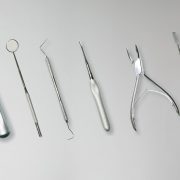Every few years, dentistry revisits an age-old question: Can ancient healing practices find scientific footing in our operatory?
Acupuncture — once stereotyped next to herbal potions and mystic incense — now stands at an interesting crossroads. No longer the “alternative outlier,” it has slowly entered conversations around pain management, anxiety control, TMJ intervention, and even anesthesia supplementation. Yet for most dentists, it still sits in a quiet corner labelled “interesting, but unproven”.
And that’s exactly why revisiting its role today matters. Pain is increasingly understood not only as a nociceptive signal but as an integrated neurobiological phenomenon influenced by memory, fear, expectation, autonomic tone and central modulation.
We, as dentists, see this neurobiological phenomenon regularly in our practice —
- the patient whose pulpal anaesthesia is adequate but whose anticipation exaggerates sensitivity
- The gag reflex is partly physical and partly a conditioned response
- The bruxism patient whose muscles carry emotional stress more than occlusal load
- The TMJ patient who does not respond fully to splints and NSAIDs alone.
In this evolving framework, an intervention that modulates peripheral nerves, central pain pathways, autonomic balance, and muscular tension earns at least a fair evaluation.
Acupuncture means “to puncture with a needle.” The term acupuncture is comprised of two different words from Latin: acus, meaning needle, and puncture, meaning insertion.1 Traditional Chinese Medicine (TCM) defines acupuncture as:
the stimulation of certain points on or near the surface of the human body through any technique of point stimulation with or without the insertion of needles, these include the use of electrical, magnetic, light and sound energy, cupping and moxibustion (the burning on or over the skin of selected herbs), to normalize physiologic functions or to treat various conditions of the human body.
Mechanism of Action
Acupuncture works by activating specific points on the body. In this technique, extremely fine metal needles are inserted into targeted locations and then gently moved, either manually or with mild electrical pulses. These same sites may also be stimulated through pressure (acupressure) or heat application (moxibustion).
Contemporary studies indicate that acupuncture influences multiple physiological systems. Its primary effect is on the nervous system — it alters how pain signals are processed and helps the body release natural pain-relieving chemicals, including serotonin and endorphins. Research has demonstrated that acupuncture can:
- Help regulate different bodily functions
- Produce pain-relieving effects
- Influence the limbic–paralimbic–neocortical pathways
- Enhance local blood flow
- Support the body’s defense against infections
By modulating various systems in the body, acupuncture delivers therapeutic benefits across a wide range of conditions, especially those involving functional imbalances. Thus, it is considered a broad-acting therapy rather than one targeting a single disease process.

Acupuncture is now understood — in biomedical contexts — as a peripheral and central neuromodulation technique capable of influencing:
- A-delta and C-fiber nociceptive transmission
- Endogenous opioid release
(β-endorphins, enkephalins, dynorphins) - Descending inhibitory pain pathways
(periaqueductal gray, nucleus raphe magnus) - Serotonin & noradrenaline levels
influencing mood and pain tolerance - Sympathetic/parasympathetic balance
affecting anxiety and salivary flow - Local microvascular perfusion
improving tissue healing and inflammatory control - Muscle tone and myofascial trigger points
— a key element in bruxism and TMD
To appreciate acupuncture in dentistry, we need to see it beyond “needle-points on a diagram.” The modern explanation lies in bioelectrical modulation and neuromodulatory pathways. When specific acupoints are stimulated, peripheral nerves transmit impulses to the central nervous system, triggering release of endorphins, enkephalins, serotonin, and norepinephrine. Functional MRI studies demonstrate changes in brain regions associated with pain processing and emotional regulation.
In dental settings, this translates to:
- Reduced nociceptive pain
- Dampened sympathetic stress response (less anxiety, calmer physiology)
- Improved local circulation supporting tissue healing
- Potential enhancement of local anesthetic effectiveness
So while the philosophy sounds ancient, the physiology aligns with modern neuroscience.
Where Evidence Is Emerging — A Look at Recent Literature
Two recent narrative discussions have already attempted to modernize the conversation on acupuncture in dentistry. They mapped emerging applications across dental anxiety, gag control, myofascial pain, bruxism, xerostomia, and cases where local anaesthesia response is unpredictable.
But the strongest piece we have at the moment is a systematic review evaluating acupuncture for acute dental pain. Out of 1,672 screened publications, only 23 controlled trials qualified; just 11 were randomized and involved 668 patients — not massive numbers, but enough to start forming patterns.
Key takeaways:
- 11 RCTs (n = 668) specifically reported on postoperative dental pain.
- Acupuncture showed lower pain scores vs sham (RR: −0.77, CI: −1.52 to −0.03).
- Worked most consistently in third molar and endodontic pain.
- Could enhance local anesthesia efficacy
- Potentially delays or reduces the need for analgesics
Acupuncture showed lower postoperative pain scores compared to sham acupuncture, and in some cases improved the efficacy of local anesthesia. Importantly, there were suggestions it may reduce postoperative analgesic consumption — a quietly meaningful outcome in the era of opioid caution.
Uses of Acupuncture in Dentistry
Acupuncture may help relieve dental pain by:
- Stimulating the nerves located in muscles and other tissues, which leads to the release of endorphins and other neurohumoral factors (e.g., neuropeptide Y, serotonin)
- Changing the processing and perception of pain in the brain and spinal cord
- Reducing the cardiovascular reflex elicited by a toothache (this is associated with the adrenergic system)
- Increasing the release of adenosine, which has antinociceptive properties
- Modulating the activity of the limbic–paralimbic–neocortical network
- Reducing inflammation by promoting the release of vascular and immunomodulatory factors
- Increasing local microcirculation, which helps disperse swelling.
Acupuncture for Dental Anesthesia
Acupuncture can support dental anesthesia. Research shows prilocaine usually takes about 2 minutes to work. Rosted and Bundegard (2003) found that patients who received acupuncture before an inferior alveolar nerve block had a faster onset time — about 62 seconds — compared to nearly 2 minutes in those who only received the injection. This suggests that acupuncture may speed up anesthetic action.
Simmons and Oleson studied auricular electrical stimulation (AES) and pain perception. Patients receiving AES showed an 18% rise in dental pain threshold, and this effect dropped when naloxone was given, indicating involvement of the body’s natural opioid system.
Post-operative Dental Pain
Third-molar surgery often causes pain, swelling, and limited jaw movement. NSAIDs help but may cause side effects. Some studies show that electro-acupuncture (EA) before and after surgery can slightly reduce pain and medication use, while others report no improvement or even increased pain. Results are mixed, but EA may benefit selected cases.
Anti-Inflammatory Action
A review by Zijlstra et al. suggested that acupuncture may trigger the release of β-endorphins and small amounts of CGRP, which, in low doses, can help reduce inflammation.
Dental Anxiety and Gag Reflex
Auricular acupuncture has been shown to reduce dental anxiety and improve patient cooperation, with effects similar to intranasal midazolam. It also helps control the gag reflex during dental procedures, including orthodontic impressions, likely by influencing nerve pathways linked to gagging.
TMJ Pain / TMD
TMD causes jaw pain, restricted movement, and joint sounds. While acupuncture cannot fix structural TMJ problems, it may ease pain and reduce muscle tension and spasms. It can also help relax the lateral pterygoid muscle, reducing TMJ clicking in some patients.
Myofascial Pain
Studies show acupuncture can reduce symptoms of myofascial pain in jaw muscles. True acupuncture improved pain and muscle tightness more than sham treatment.
Atypical Facial Pain
Acupuncture may help by affecting brain regions that control stress and pain response, promoting emotional and physical relief.
Xerostomia
Acupuncture has been used for dry mouth, especially in patients treated for head-and-neck cancer. It may work by improving blood flow, stimulating nerves, and activating salivary reflex pathways.
Neural Disorders
Acupuncture has been used in facial nerve problems like Bell’s palsy and trigeminal neuralgia. It may improve nerve function, balance autonomic activity, and support nerve recovery. Studies show many trigeminal neuralgia patients respond well to electro-acupuncture.
Advantages of Acupuncture
- Safe and non-toxic
- Few side effects
- No drug dependence
- Can be simple when done by a trained professional
Disadvantages of Acupuncture
- Time-consuming
- May not always give full pain control
- Difficult in children and needle-phobic patients
- Limited strong scientific evidence in some areas
Of course, criticisms exist and must be addressed. The placebo effect is frequently invoked as an explanation for acupuncture’s success. But in dentistry, where pain experience is deeply subjective, the placebo effect is not the villain — provided we are transparent, ethical, and practice within professional limits.
If a patient experiences less pain, smoother recovery, or reduced anxiety through a safe, physiologically plausible technique, the mechanism becomes almost secondary — as long as expectations are set responsibly and conventional care is never compromised. Better outcomes are better outcomes. Dentists are not in the business of ideological purity; we are in the business of patient comfort and oral health.
And thus, acupuncture today sits in a space similar to where lasers and guided biofilm therapy once sat: supported by physiology, promising in early trials, and awaiting larger, standardized studies.
References
1.Rosted P. Introduction to acupuncture in dentistry. Br Dent J. 2000;189(3):136–140 [DOI] [PubMed] [Google Scholar]
2.Stux G, Pomeranz G. Scientific Basis of Acupuncture: Acupuncture Textbook and Atlas. Heidelberg: Springer Verlag; 1987 [Google Scholar]
3.Lao L, Bergman S, Langenberg P, Wong RH, Berman B. Efficacy of Chinese acupuncture on postoperative oral surgery pain. Oral Surg Oral Med Oral Pathol Oral Radiol Endod. 1995;79(4):423–428 [DOI] [PubMed] [Google Scholar]
- National Institutes of Health (NIH). NIH Consensus Conference: Acupuncture. JAMA. 1998;280(17):1518–1524 [PubMed] [Google Scholar]
5.Karst M, Winterhalter M, Münte S, et al. Auricular acupuncture for dental anxiety: A randomized controlled trial. Anesth Analg. 2007;104(2):295–300 [DOI] [PubMed] [Google Scholar]




















Comments